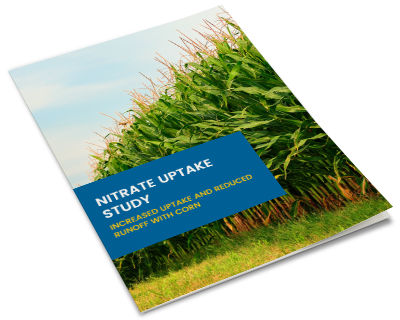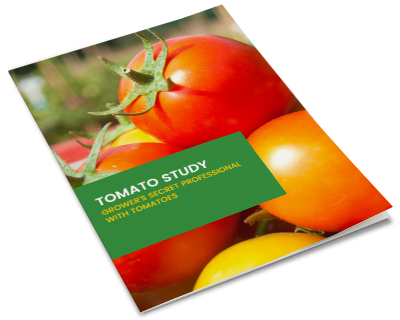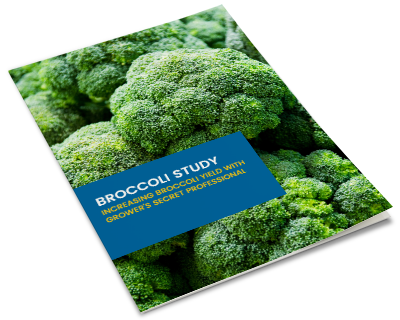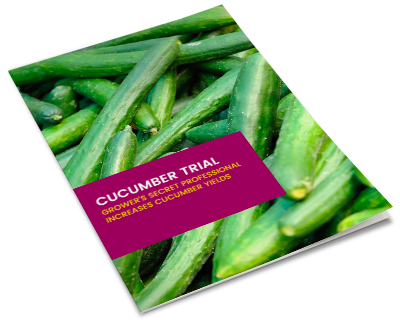|
Posted By: Wesley Chun, Ph.D. / |
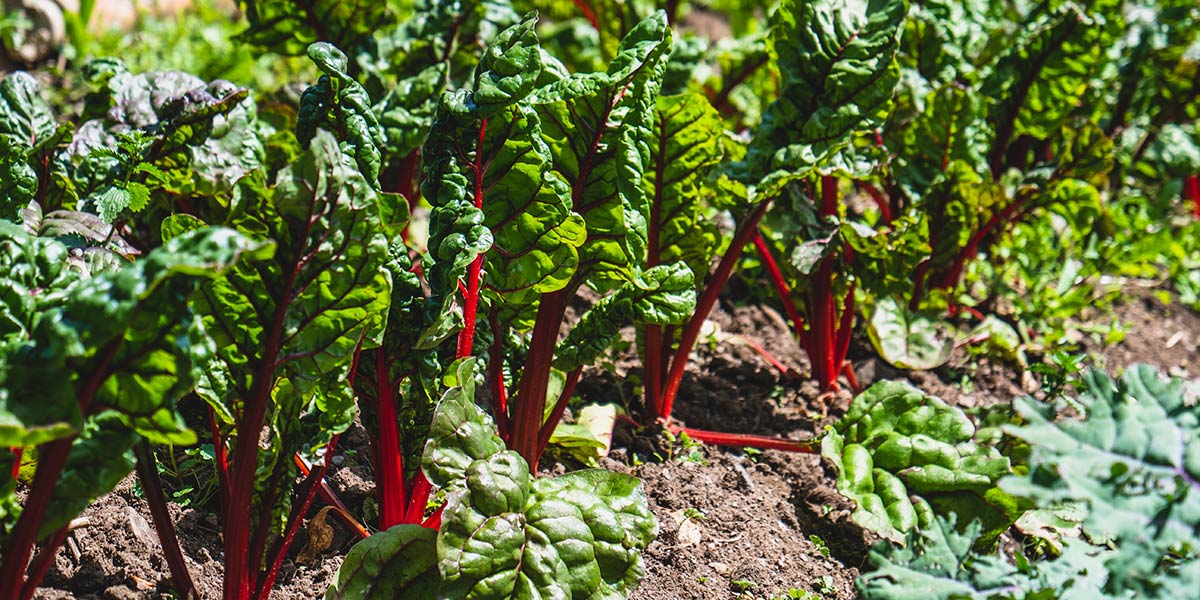
Organic Versus Conventional Foods: Fifty Shades of Green
By Dr. Wesley Chun Ph.D., Grower's Secret, Chief Science Officer
Introduction
Organically produced food is an essential form of food production that has existed since the dawn of agriculture. It resided with the Green Revolution but has regained popularity since the rebirth of the organic movement in the 1940s. Once only available in organic stores, three out of four stores now carry organic products. From 2010 to 2019, organic food sales increased 4.6 to 12.2 percent annually. In 2018, total US organic sales reached $52.5 billion, a 6.3 percent increase from 2017. US organic food sales accounted for $49.7 billion, a 5.9 percent increase from 2017. This year organic produce sales as a result of the COVID pandemic jumped 22 percent in March, leading to a first-quarter rise of 8 percent for 2020.
Typically, around 84 percent of Americans buy organic food sometimes, and 45 percent buy organic once a month. Projections for the organic foods market is a combined annual growth rate of 10.7 percent, and exceed $352,190,000,000 by 2025. Currently, California leads with the number of organic farms and total acreage, followed by Wisconsin and New York. It coincides with the West and Northeast United States having the most significant increase in organic dollars spent. So, what is the basis of the popularity of organic foods? The COVID pandemic induced increase in organic purchases suggest that consumers were looking for trusted, healthy, and safe products that may confer additional health benefits. Other beliefs are that organic foods are pesticide-free, environmentally-sound, safe, and natural. So what are the truths behind these beliefs?
Do you Know as Much as you Think you Know?
The idea of “organic” conveyed by the organic label implies, being singularly good, good for their health, and good for the environment. Around 80 percent of the people buying certified organic food believe that the food was grown without pesticides, and 61 percent assume that the food grown was without antibiotics. Most organic supporters believe that organic produced foods are safer or healthier than conventional alternatives. However, there is a lack of strong evidence to support that organic foods have significantly higher nutritive value. The lower pesticide residues and antibiotic-resistant bacteria observed in organic foods are not substantially different from conventionally produced foods. Organic supporters will expound on the environmental and animal health impacts caused by conventional farming. Yet, few can describe current conventional farming techniques such as integrated pest management, precision agriculture, and smart farming. Organic supporters will argue that organic is better, but very few can describe, let alone grow organic crops. It becomes apparent that people feel they understand complex relationships with greater precision, coherence, and depth than they do. Leonid Rozinblit and Frank Keil in 2002 called this the Illusion of Explanatory Depth. Also known as the Dunning-Kruger effect, it is a situation where intelligent people start making judgments in areas where they lack any real knowledge. For example, how many GMO opponents can describe in detail how to produce GMOs, or even name necessary GMO pharmaceuticals? How many people know that genetic modification may soon have a cure for sickle cell anemia? The Dunning-Kruger effect applies to everything we are capable of understanding or misunderstanding, frequently resulting in an overestimation of the value placed on an item, topic, or cause. So, this brings the fundamental question, does the word organic imply, or does it mean healthy, antibiotic- and pesticide-free, and environmentally safe? There are a few products that have capitalized on the power of the word organic. For example, you can purchase organic water that followed established rules and can legally display the USDA organic seal. The product claims to be “Good for your health; good for Earth’s health.”
Bobby Knight once said, “Everybody has the will to win; few people have the will to prepare to win.” Similarly, truth and knowledge are needed to make informed choices. Unfortunately, people are not willing to put in the time to truly make an expert decision. Substantive preparation is required to champion an opinion or cause expertly. I encourage everyone to look daily for opportunities to collect data and review the collected data for knowledge.
We Were Always Green; We Just Slipped into a Lighter Shade
Historically, most agriculture was organic by nature, starting with the First Agricultural Revolution, when humans transitioned from hunter/gatherer to domesticated agriculture. Farming incorporated indigenous knowledge, traditional tools, natural resources, and organic fertilizers that integrated with the cultural beliefs of the growers. Traditional agriculture had its production limits; this farming system could not meet the demands of a growing population. The Second Agricultural Revolution arose in England (1600-1800) with the introduction of crop rotation and selective livestock breeding. Around the late 1800s, conventional agriculture emerged using new synthetic fertilizers and machinery that allowed the economical production of higher quantities of inexpensive food. The Green Revolution (or the Third Agricultural Revolution) utilized high yielding varieties of cereals, chemical pesticides, agrochemicals, and water control to increase food production drastically and became widespread after World War 2 when synthetic nitrogen became more available. However, at around the same time, traditional farming philosophies were making a return to modern-day agriculture.
Modern-day organic agriculture has its origins with Sir Albert Howard, a botanist. He is known as “the father of modern composting” for his refinement of a traditional Indian composting system known as the Indore Method. This method was a composting process that involves layering organic waste bedding material from cattle with urine-soaked soil from the sheds, and seeding with old compost material to begin the composting process. Sir Howard, served as an agricultural advisor in India. His original mission was to train Indian farming practices in conventional agrarian science. However, he became enamored with Indian agricultural practices as he noticed a strong connection between healthy soil and the villages’ healthy populations, livestock, and crops. In 1931 he wrote The Waste Products of Agriculture, sharing his 26 years of experience with improved crop production in Indian farming. He was inspired to write a classic organic farming text called “An Agricultural Testament” in 1940. This work advocated natural processes when modern chemical-based agriculture was just beginning to reshape food production. The “Testament” focused on the nature and management of soil fertility and composting.
Jerome Irving Rodale, the founder of the Rodale Institute, is considered the father of the modern organic farming movement. He was an entrepreneur that moved his electrical manufacturing businesses to Emmanus, Pennsylvania, in 1930 upon offers of lower costs and free factory space. There, he started a small publishing company from a corner in his factory. Struggling with health problems all his life and inspired by Albert Howard, he bought a farm in 1940 and began to experiment with growing food without chemicals. While conducting his experiments, he noticed his health improve along with the quality of the land. He felt compelled to share his findings with the world and began publishing the Organic Gardening and Farming magazine in 1942. In 1947 he founded the Soil and Health Society, which operated a 333-acre farm in Maxatawny, Pa, that focused on regenerative agriculture techniques. Later renamed the Rodale Research Institute, which pioneered modern organic farming and promoted developing nutrient-rich, contaminant-free soil. A primary goal was developing and demonstrating practical, natural methods of rebuilding soil fertility. His work had perfect timing, the need for nitrogen during WW 2 diverted the chemical from the farm to making munitions for WW 2.
In 1947, J. I. Rodale wrote this on a chalkboard, “Healthy Soil = Healthy Food = Healthy People.” By 1948, Rodale’s book Pay Dirt: Farming and Gardening with Composts, stressed the importance of feeding the soil to produce nutritionally sound food. The Rodale Institute has since conducted numerous farming systems trials and has demonstrated that organically produced crops:
- Are competitive with conventional yields after a 5-year transition period.
- May produce yields up to 40% higher in times of drought.
- The system returns 3 - 6X higher profits for farmers.
- The process does not leach toxic chemicals into the waterways.
- Efficiently, it uses 45% less energy.
- It releases 40% fewer carbon emissions.
By 1970, increased environmental awareness and consumer demand fueled the growth of the organic industry. Initially, most agreed philosophically, but there were no standards for organic food. Organic was decentralized and left to local certifying agents. It wasn’t until 1990 when Congress passed the Organic Foods Production Act that The USDA took responsibility to develop national rules and standards for producers, handlers, and certifiers. The USDA also formed the National Organic Standards Board to make recommendations for allowable materials and handling and writing of the rules. In 2002 the final regulations passed.
Rules of Modern Organic Agriculture
Modern organic agriculture’s definition is a style of farming that avoids the use of synthetic fertilizers, synthetic pesticides, and genetically modified organisms. The USDA’s National Organic Program defines it as “Organic production systems that integrate cultural, biological, and mechanical practices that foster cycling of resources, promote ecological balance, and conserve biodiversity.” In reality, these rules provide guidelines for the production, certification, and processing of organic food. Essential points from these rules are:
- Organic food indicates a food production method, not specific nutrition or health-related guideline.
- Products carrying a USDA Organic seal means at least 95% of the ingredients come from organically produced plants or animals. Products with “made with organic ingredients” says 70% of the ingredients used were organic. Management of the USDA Organic seal falls to authorized USDA certifying agents. There is no certification requirement by producers generating less than $5,000 in revenue.
- Products carrying a logo from a Material Review Organization (see below) certifies that production used organically approved materials.
- Also, farmers can use pesticides and herbicides approved by the USDA NOP certification standards.
- In general, the following guidelines apply:
- Three years without using prohibited substances (most synthetic pesticides and fertilizers) needs to pass before certification.
- Genetically modified organisms (GMOs) may not be employed.
- Living conditions for livestock accommodated natural behaviors, feed for animals was 100% organic food, and no antibiotics or hormones were employed.
- Process foods cannot contain artificial preservatives, colors, or flavors (there are exceptions like baking soda.)
Material Review Organizations
Worldwide, several material review organizations review agricultural inputs to determine compliance with the USDA NOP and other international guidelines. In the US, there are several certifying agencies. These include the OMRI (Organic Material Review Institute), WSDA (Washington State Department of Agriculture), and the CDFA OIM (California Department of Agriculture Organic Input Material) program. Certified agents refer to these reviewed lists of agents for organic operations. In general, these approved organic inputs prohibit the following:
- Synthetic fertilizers when used to add nutrients to the plant. Certain products that contain plant nutrients such as sulfur, potassium bicarbonate, and copper are acceptable to control fungal diseases.
- Any form of human sewage sludge fertilizer is not acceptable. However, animal manure is adequate.
- Irradiation is not acceptable
- Genetic engineering to improve disease or pest resistance, or to increase the nutritional content of a crop.
- Antibiotics or growth hormones for livestock are not acceptable
A label or seal from a Material Research Organization means that organically approved products are acceptable in the production of the crop or manufactured food. Food and food products that are organic go through a review and certification process by USDA approved certifiers. A USDA Organic seal indicates one or more of the following are acceptable for use in the production of a crop or food product:
- Organically approved fertilizers. These include fertilizers that are mined, collected, or derived from plant and animal material and approved by an MRO.
- All green and animal manure or compost is acceptable.
- Crop rotation.
- Cover crops.
- Mulch for weed control.
- Predatory insects or traps.
- Natural and a few synthetic pesticides as a last resort.
To Tell the Truth
I mentioned at the beginning of this article that you can purchase USDA approved organic water. By definition, it met the NOP rules since it was water that was the byproduct of the manufacture of maple syrup. Thus, it qualified for being sustainably sourced, and purity was claimed as natural filtration by maple trees. Organic water, defined as organic under the current rules, is acceptable. It is important to note that an “organic” label or seal only means that organically approved materials are acceptable in the production and that rules and guidelines are in use for the production of the organic water. So is organic water healthier or more nutritious for you?
The rules that govern organic food production can also be fluid. For example, antibiotics were allowed and used on apples from 2002 to 2014 to control fire blight control under organic production rules and guidelines. An updated program that uses a combination of bacterial and yeast bioprotectants, lime, sulfur, fish oil, and copper is now acceptable.
Another misconception is that only natural materials are acceptable in the production and manufacture of organic foods. Click on this URL for a complete list of synthetic compounds allowed for use in organic production from the Electronic Code of Federal Regulations. You will see that many synthetic compounds are approved, some with restrictions for plant and livestock.
Organic does not necessarily mean more nutritious or healthy. Specific vitamins and antioxidants are higher in some but not all organic fruit and vegetables. Organically grown crops usually have higher vitamin C, carotenoids, and phenolic compounds. Vitamin C is a powerful antioxidant that is usually produced in higher amounts to protect plants from intense light or drought. Phenolics result from various forms of stress, which may be a result of lower levels of available nutrients that occur with organic agriculture. There have been reports of lower levels of heavy metals and pesticides; however, the Food Standards Agency states that there is no significant health benefit compared to conventionally produced foods.
It is unclear whether organic food is healthier. Animal studies have shown positive effects of an organic diet on weight, growth, fertility indices, and the immune system. It is less clear with human studies, although it is suggestive that the consumption of organic foods may lower risks of allergies. One primary reason with the ambiguity seen with human studies is the impact of lifestyle differences. Organic favoring folks tend to have healthier lifestyles.
In a nutshell, there is a slight, non-significant nutritional difference between conventional and organic foods. Conventionally produced crops generally have higher protein levels. However, organic products have more top-quality amino acids. Organic produce, in general, has higher levels of vitamin C, iron, magnesium, and phosphorus and are lower in nitrates and pesticide residues. Except for wheat, oats, and wine, organic foods have higher levels of antioxidants phytochemicals (anthocyanins, flavonoids, carotenoids). Organic crops have lower pesticide residues, nitrates, and sometimes mycotoxins. Detection of anticarcinogenic and antimutagenic compounds in juices from organically produced fruits is present. The current belief is that nutrient-dense organic food has the power to prevent and reverse diseases. However, a compelling, straightforward relationship between organic foods and human health is not apparent. Perhaps it is better to consume food from a variety of production sources to get a good nutritional balance?
“You Must Choose, but Choose Wisely.”
In closing, the organic label or seal means that the food or product utilized organic approved inputs and followed the rules for organic production. Some synthetic chemicals are allowed in the production of organic food. Nutritional differences between conventional and organic foods are slight, and health benefits are unclear. The principal value of organic food production is environmental health based on the extensive work done by the Rodale Institute. The cost of organic is another consideration. Organic foods usually cost more due to more extensive farming input and higher cost of organic inputs. However, the price gap is narrowing, and as the Grail Knight said, “You must choose, but choose wisely.” Put a little time in to learn about organic foods so that you can make an informed decision. After all, you do not want to “choose… poorly.”


